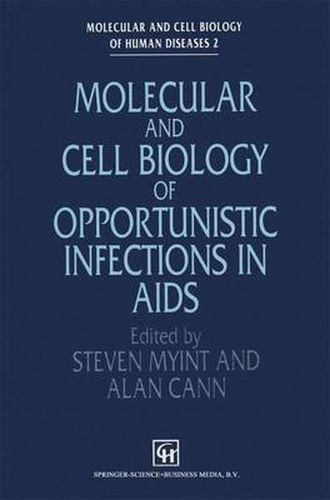Readings Newsletter
Become a Readings Member to make your shopping experience even easier.
Sign in or sign up for free!
You’re not far away from qualifying for FREE standard shipping within Australia
You’ve qualified for FREE standard shipping within Australia
The cart is loading…






This title is printed to order. This book may have been self-published. If so, we cannot guarantee the quality of the content. In the main most books will have gone through the editing process however some may not. We therefore suggest that you be aware of this before ordering this book. If in doubt check either the author or publisher’s details as we are unable to accept any returns unless they are faulty. Please contact us if you have any questions.
Human immunodeficiency virus and AIDS have received much attention in the last decade. As the major cause of death in young adults, this concern is merited. AIDS has also ushered onto the clinical agenda a number of unusual and interesting pathogens. These have had considerably less attention than the virus itself, but are arguably as important. This book attempts to put into one volume a state of the art review of the basic biology of these opportunistic organisms. When compiling this book, the perceived difficulty was deciding how to restrict the number of chapters, as there is a large number of opportunistic organisms. It soon became clear, however, that the chapters would select themselves, as the work on many of these organisms was still in its infancy. We can be criticized for including Salmonella, which is not thought to be an opportunistic infection, and excluding Cryptococcus. Our defence is that the former has an interesting relationship with HIV and the latter is one of those organisms for which the basic biology is still in its early stages. The authors are all active researchers in their respective fields and we are grateful that they managed to review their subjects in the short turn-around time required for a book such as this not to be needlessly outdated on publication. We hope that, if nothing else, this book stimulates interest and more research on these agents: perhaps, in future editions, there will be much more to describe on their molecular biology.
$9.00 standard shipping within Australia
FREE standard shipping within Australia for orders over $100.00
Express & International shipping calculated at checkout
This title is printed to order. This book may have been self-published. If so, we cannot guarantee the quality of the content. In the main most books will have gone through the editing process however some may not. We therefore suggest that you be aware of this before ordering this book. If in doubt check either the author or publisher’s details as we are unable to accept any returns unless they are faulty. Please contact us if you have any questions.
Human immunodeficiency virus and AIDS have received much attention in the last decade. As the major cause of death in young adults, this concern is merited. AIDS has also ushered onto the clinical agenda a number of unusual and interesting pathogens. These have had considerably less attention than the virus itself, but are arguably as important. This book attempts to put into one volume a state of the art review of the basic biology of these opportunistic organisms. When compiling this book, the perceived difficulty was deciding how to restrict the number of chapters, as there is a large number of opportunistic organisms. It soon became clear, however, that the chapters would select themselves, as the work on many of these organisms was still in its infancy. We can be criticized for including Salmonella, which is not thought to be an opportunistic infection, and excluding Cryptococcus. Our defence is that the former has an interesting relationship with HIV and the latter is one of those organisms for which the basic biology is still in its early stages. The authors are all active researchers in their respective fields and we are grateful that they managed to review their subjects in the short turn-around time required for a book such as this not to be needlessly outdated on publication. We hope that, if nothing else, this book stimulates interest and more research on these agents: perhaps, in future editions, there will be much more to describe on their molecular biology.